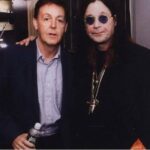Released in 1969 on Led Zeppelin I, “Dazed and Confused” stands as one of Led Zeppelin’s most iconic tracks, renowned for its haunting atmosphere and complex, shifting arrangements. Originally adapted by Jimmy Page from a folk song by Jake Holmes, the track’s dark, brooding tone is amplified by Robert Plant’s evocative vocals, which express confusion, longing, and a sense of disorientation. The song’s blues-based riff and psychedelic overtones create a mood of tension and anticipation that builds throughout its duration.
The structure of “Dazed and Confused” is unconventional, moving beyond standard verse-chorus formats to feature extended instrumental passages. These sections showcase Page’s innovative guitar work, particularly his use of a violin bow to produce eerie, otherworldly sounds. His layered guitar textures and improvisational flair make the song feel expansive and immersive. Meanwhile, Plant’s dynamic vocal range—shifting from hypnotic murmurs to impassioned wails—adds emotional depth and intensity, enhancing the track’s sense of unease.
The song quickly became a centerpiece of Led Zeppelin’s live shows, often stretching beyond 20 minutes with extended solos and improvisational detours. These performances highlighted the band’s chemistry and ability to transform the song into a constantly evolving sonic journey. John Paul Jones’s deep, rumbling bass and John Bonham’s thunderous drumming provided a powerful rhythmic foundation, allowing Page and Plant the freedom to explore the song’s emotional and sonic possibilities.
“Dazed and Confused” remains a defining moment in Led Zeppelin’s early career, capturing their willingness to push musical boundaries and blend diverse influences into a cohesive, powerful sound. With its haunting energy, experimental structure, and raw emotional power, it continues to resonate with listeners, standing as a testament to the band’s creativity and enduring.










